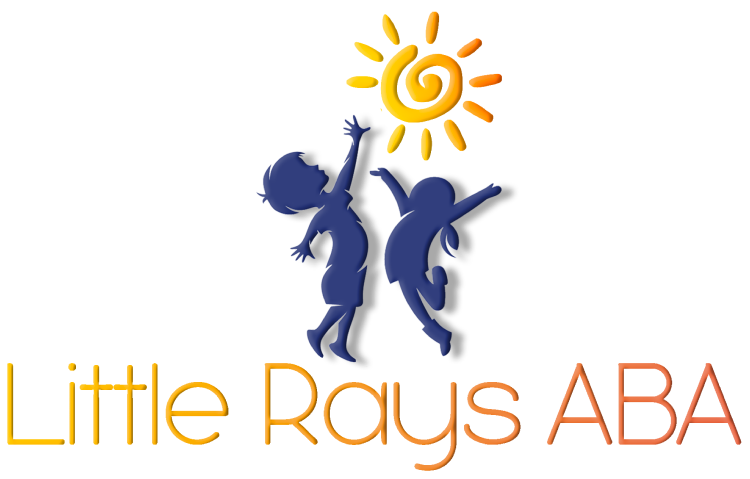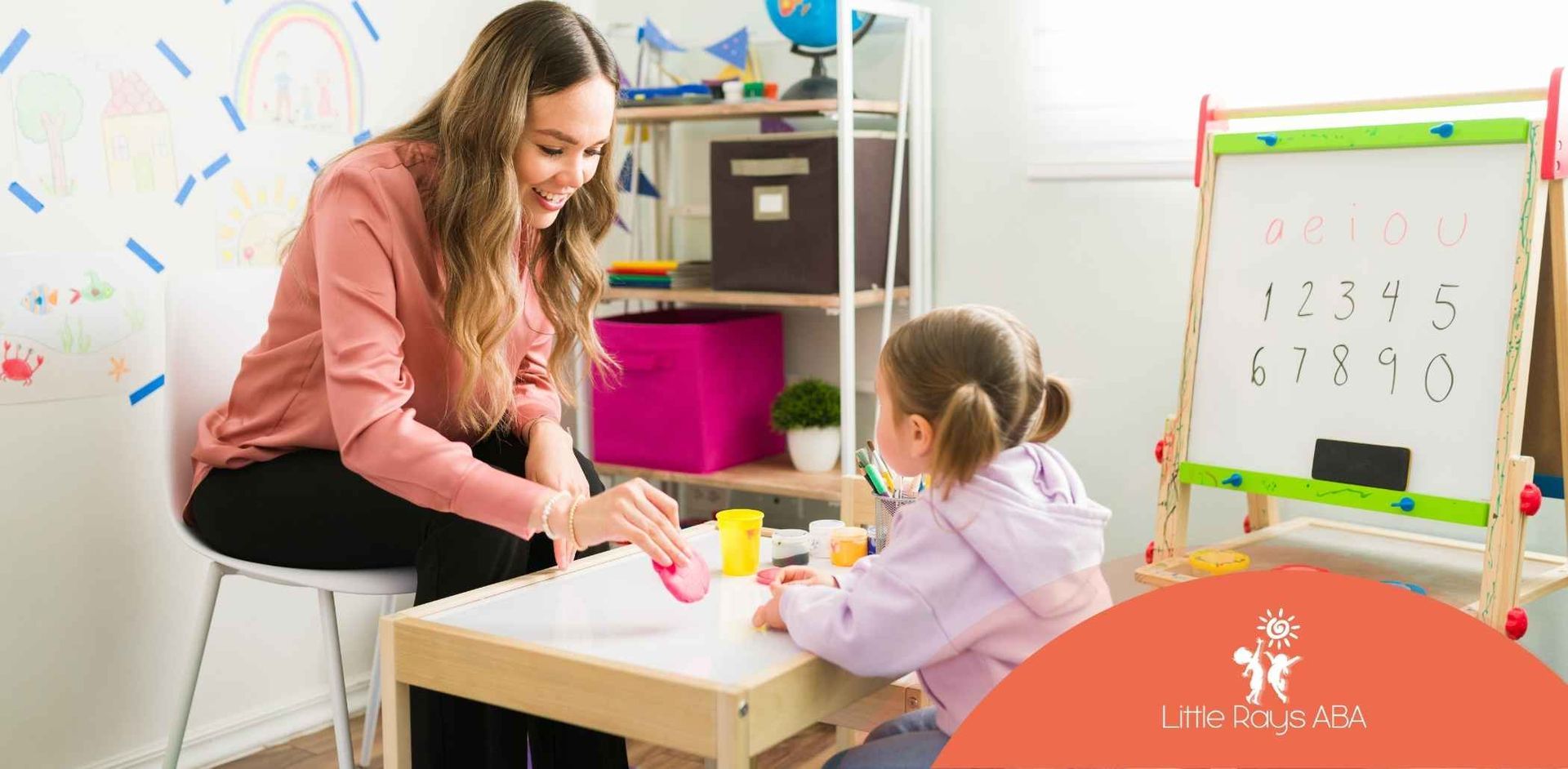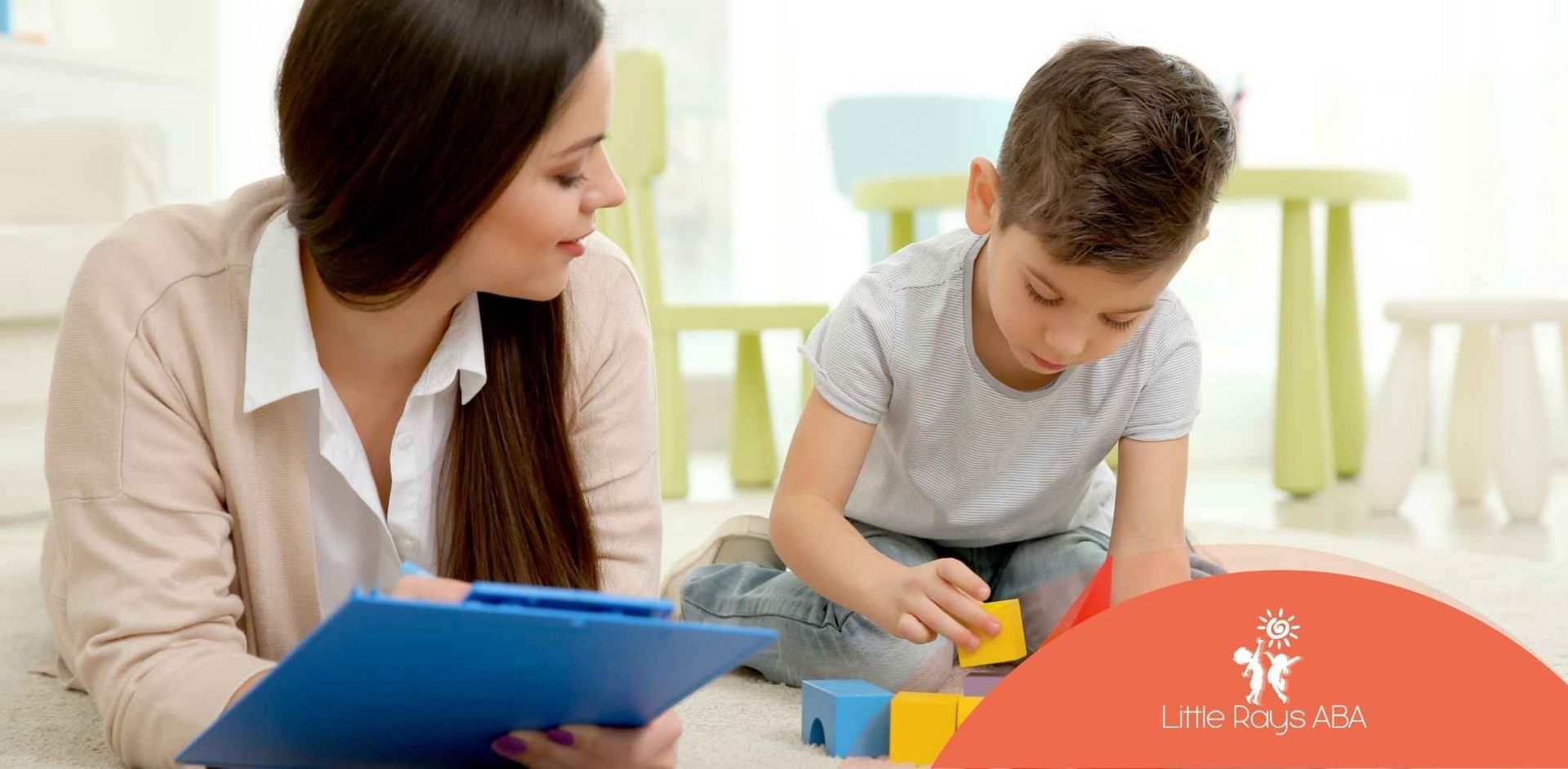
Are There Different Types of ABA Therapy? A Complete Guide
If you are looking for support for someone with autism spectrum disorder, you may hear about Applied Behavior Analysis, or ABA therapy. But there is not just one way to do ABA. Different types of ABA use different methods and goals. It is important to know about these different types if you want to make a good choice for your child.
This guide will help you understand the different types of ABA therapy and behavior analysis. You will read about programs that are wide and go deep, as well as programs that focus on just one thing. With this, you can look at your options and find what will work best for your child who is on the autism spectrum. This is a place to start so you can get the help that fits your needs.
Overview of ABA Therapy
ABA therapy is a way of working with behavior that comes from the principles of behaviorism. It looks at how people act, what causes those actions, and how things around them play a part. The main idea is that when a person does something and gets praise or a reward, they will want to do it more often.
Therapists use behavior analysis to watch people closely and learn more about what makes someone act a certain way. They look at what happens right before and after a behavior to see what leads to those actions. From that, they can give steps that fit the person. These steps help with skill development, behavior change, and shaping positive behavior change. It is a way to help people make new habits and reach their goals. Next, we will talk about ABA therapy and the principles of behaviorism in more detail.
What Is Applied Behavior Analysis?
Applied Behavior Analysis, also called ABA therapy, uses the science behind learning and people’s actions, behavior analysis. It helps people make real changes in their daily lives. Therapists look at how someone acts, try to understand why they do it, and then use ways to help them make good changes. Many people like ABA therapy. It is seen as a helpful way to work with autism.
ABA therapy has steps it follows. The work begins with looking at someone’s strengths and the things they need help with. After that, the therapists make plans. These plans fit the person’s own needs and goals. The goals can be about communication, social skills, or abilities used in daily living.
Even though a lot of people think of autism with behavior analysis, ABA therapy can work in other cases and places, too. The main point is to help people get new skills, cut out challenging behaviors, and improve their quality of life. Therapists use structured help and support to do this with each person.
Core Principles and Goals in ABA
At the core of ABA, there is the "ABC model." This model helps us understand behavior by looking at three things: what comes before a behavior (Antecedent), the behavior itself, and what happens right after (Consequence). Therapists use these steps to find out why a person acts a certain way. When they know that, they can make plans that work well.
One big way to help someone do a desired behavior is to use positive reinforcement. This means giving something good, like praise, a toy, or an activity that the person likes, right after the person does a certain action. When a person receives a reward, it motivates them to repeat the same action. Using rewards like this helps make learning fun and good for them.
The main goals of ABA are to help with behavior change and skill acquisition. These goals are based on each person. Many times, they may include:
- Improving communication and language abilities.
- Enhancing social interaction and play skills.
- Developing essential daily living and self-care skills.
Comprehensive ABA Therapy
Comprehensive ABA therapy is a comprehensive approach to helping children learn multiple skills simultaneously. This type of ABA therapy works on things like communication, social skills, self-care, and schoolwork. It is a good choice for skill development because it helps in more than one area at the same time.
Many people suggest comprehensive ABA for younger kids who need a lot of help with daily tasks and learning new things. This intensive behavioral intervention helps to build strong basic skills that can help a child grow and be more independent. Below, you will find key points about comprehensive ABA therapy and learn when it can help the most.
Definition and Key Characteristics
Comprehensive ABA therapy is known for its wide reach and strong focus. It aims to bring real and long-lasting change in many areas of a person's growth, and not just fix one problem. This comprehensive ABA approach is good for teaching foundational skills that help with more complex skills later in life.
The therapy sessions for comprehensive ABA are intensive. People often get 20 to 40 hours of ABA therapy every week. This happens over a long time—usually one to three years or even more. This makes sure that the foundational skills become part of their daily life and work in many places.
Key parts of this approach include:
- Broad Focus: It looks at and works on many behaviors and abilities at the same time.
- High Intensity: There are many therapy sessions each week to give lots of chances to learn.
- Long-Term Commitment: This is a long-term therapy plan to help deep growth happen.
- Regular Reassessment: The therapy goals are checked often, and changed if needed, so the therapy stays useful and helps the most.
Comprehensive ABA therapy gives a lot of support in building both simple and complex skills. It helps people over the year, gives support to their families, and brings the best results when all parts of life are included in the plan.
When Is Comprehensive ABA Used?
Comprehensive ABA therapy is often used as an early intervention for young children who have autism spectrum disorder. Most kids who join this program are under the age of five. An early start can make a big difference in a child’s future.
This program is made for those kids who find it hard to do many things. If your child has trouble with talking, social interactions, playing, or daily routines, comprehensive ABA therapy helps support all of these needs. It helps young children learn foundational skills that they will use in learning and in life later on.
Choosing comprehensive ABA depends on the unique needs of each individual. A Board Certified Behavior Analyst takes time to learn about the child’s strengths and challenges. They will see if early intervention using comprehensive ABA fits what the child needs to grow and do well. This way, both the plan and the care fit the child best.
Focused ABA Therapy
Unlike the broad range you get from larger programs, focused ABA therapy gives help with some specific needs. It looks at the main areas that need extra care. So, if someone has a few important things to work on but not a lot of delays in all areas, focused ABA will be a good fit.
With focused ABA therapy, the team works to reach clear and achievable goals without taking too much time. The steps are easy to follow but still give strong results. This way, people can see real changes in their lives. Now, let’s talk about the main things you should know about focused ABA therapy and see who will get the most from it.
Primary Features of Focused ABA
Focused ABA therapy is about working with accuracy. It works on just one to three specific behaviors or problem behaviors that are making life hard for the person or their family. For example, it can help to reduce hurting yourself or help improve talking with friends.
The therapy uses less time each week than comprehensive ABA. You usually have 10 to 20 hours a week, not more. Because the goals are clear and specific, many people see good, positive behavioral changes more quickly. The plan breaks the goals into manageable steps so progress is possible.
Key features of focused ABA therapy include:
- Targeted Goals: Focuses on a small set of specific skills or problem behaviors.
- Lower Intensity: You spend fewer hours each week than you would in comprehensive ABA therapy.
- Shorter Duration: This therapy most often lasts for a few months up to one year.#
Who Benefits Most from Focused ABA?
Focused ABA therapy can help people of all ages. It is beneficial for both young children and adults who have a few areas they need to improve. This method works well when someone has many basic or foundational skills but needs help with just one or two problems. For example, a teenager may get ABA therapy to help with feeling worried at school.
The approach is also helpful for those with developmental disabilities. You can use it to teach important skills, such as using the toilet, learning how to eat, or communicating your needs to others instead of exhibiting challenging behaviors. Focused ABA looks at the individual needs of each person and puts the most serious problems first.
Even young children can get help from this if they don’t need a bigger program. If a child only has issues in a few areas, focused ABA therapy can target just those, without using a broader, more intense plan. This makes it a flexible choice that works for many families with different needs.
Discrete Trial Training (DTT) and Its Role
Discrete Trial Training (DTT) is a common way used in ABA therapy to teach new skills. This method breaks down a skill into small steps called discrete trials. Each part of the skill is taught simply and clearly. The teaching happens following a set order that is easy to see.
DTT is good for helping people learn new skills that they may not get from watching others or being in the room. During discrete trials, therapists can use things like token economies to help give motivation and keep the learner working. Now, let's talk about how DTT works and what makes it useful.
How DTT Works in Practice
The practice of Discrete Trial Training follows a clear, structured sequence. Each trial consists of three main parts: the antecedent, the behavior, and the consequence. This step-by-step instruction makes it easier for a learner to understand what is expected and to achieve success.
First, the therapist presents the antecedent, which is a clear and concise instruction or cue, such as "Point to the red card." Next is the behavior, which is the learner's response to the instruction. The therapist may provide a prompt to help guide the learner toward the correct response if needed. Finally, the consequence is delivered. If the learner performs the desired behavior correctly, they receive positive reinforcement, such as praise or a small reward. If the response is incorrect, the therapist typically provides gentle correction and moves on to the next trial.
This cycle is repeated multiple times to help solidify the new skill. The table below illustrates the flow of a single discrete trial.
| DTT Step | Description | Example |
|---|---|---|
| Antecedent | The therapist gives a clear instruction or cue. | "Touch your nose." |
| Behavior | The child acts in response to the cue. | The child touches their nose. |
| Consequence | The therapist provides immediate feedback. | "Great job touching your nose!" (Positive Reinforcement) |
Strengths and Limitations of DTT
One of the main strengths of DTT in ABA therapy is the way it is set up. The steps are clear, and there is a lot of repetition. This helps a person learn new skills, especially if they have a hard time learning in less set-up places. The frequent rewards in skill development help people stay interested and keep trying.
But this set-up can be a downside, too. Because DTT is done in a set, one-on-one setting, the new skills a person gets may not move into everyday life as easily as we want. Some people also say that the repeated way of doing things can look and feel not real or robotic if you do not use it with care, or you do not use it with other ways of teaching to fix problem behaviors.
It is important for us to know both the good sides and the drawbacks of DTT so we can get the most from the effectiveness of ABA therapy.
- Strengths: DTT is very good for first skill acquisition and for people who need more steps.
- Limitations: It may not help a skill move into real life on its own; it can be seen as stiff.
- Best Practice: People mostly use DTT with other ways, like Natural Environment Teaching, to fix problem behaviors and help new skills move into all areas of life.
Natural Environment Teaching (NET)
Natural Environment Teaching (NET), or natural environment training, is an ABA method. It works by adding learning chances into everyday things the person does. Instead of sitting at a table and learning, the person practices skills in natural environments, like the places they live, play, and learn.
This way of learning looks at what the learner likes and what motivates them to help with skill acquisition. Teaching in real-life places means new skills can be used right away and in different settings. Let's look at how natural environment training is not like other ways of learning and why it works well.
How NET Differs from Other ABA Methods
The main difference between NET and a method like DTT is where and how the teaching happens. NET happens in natural settings, like the playground, at the dinner table, or when kids play with others. The therapist does not take the lead. Instead, the child does, and the therapist builds on the child’s interests. This helps teach new skills by using what the child likes in that moment.
For example, when a child is playing with blocks, the therapist will use that time to help with communication skills. The child may be asked to request “more blocks” or to name a color of the blocks. In DTT, though, it is usually the therapist who leads, and it takes place in a set and controlled space. NET, in contrast, is meant to be free-flowing and is part of real-life social interactions.
Here are some main points that set NET apart from other ABA methods:
- Child-Led: All learning focuses on what the child is interested in right now.
- Natural Reinforcers: Rewards come right from the activity, like getting a toy car right after asking for it.
- Focus on Generalization: The skills are taught in places and at times when they will be used later on.
In NET, the goal is to teach new skills for use in everyday natural settings, especially when it comes to communication skills and social interactions.
Real-World Examples and Effectiveness
The power of NET comes from how it helps in everyday life. Picture a child with their parent at the store. A therapist using NET might use this time to help the child point to foods, ask for things they want to put in the cart, or learn to wait in line. The child learns from what is happening around them right then.
In another case, a child can learn social skills on a playdate. A therapist may help the child share a toy or ask someone to play. Studies show that these natural ways to teach are good for helping children with autism have better social and talking skills. This kind of teaching helps positive behavior change because it makes what the child learns useful in real life.
NET works well to help kids use their new skills in new places. When a child learns how to tell someone what they want during snack time at home, they're more likely to do it at school or at a friend's house, too. This helps with behavior change and makes NET great for learning skills that matter every day.
Deciding on the Right ABA Therapy Type
Choosing the right kind of ABA therapy is very important. You should pick the one that fits the person’s own needs. There isn’t just one type of ABA therapy that works for all. What helps most depends on the person’s age, what kind of challenges they face, and their own goals they want to reach with ABA therapy.
You need to start with a good checkup from a skilled expert. This is the first step. In this checkup, there might be a lot of family involvement. The goal is to learn all about the individual needs. Then ABA therapy can be set up to give better help. The next part will talk about what to think about and how to match the best ABA therapy methods to each person’s goals.
Factors to Consider for Individual Needs
Making a good choice takes looking at a few key things. The most important part is doing a full check, which often means doing a functional behavior assessment (FBA). This step helps find out why the person is showing challenging behaviors. It is needed to make a strong plan to help.
The specific needs of the person matter most. You need to ask if the challenges are everywhere in the person's life or if there are just a few specific behaviors causing problems. This will show if you need to use a broad approach or to focus just on those spots. You also need to set the goals of therapy, and make sure the goals are clear and that they can be reached.
Family involvement is also important. The family's needs, what help they have, and how much they can work with you in therapy can change how well the ABA program works. When thinking of what to do, look at these things:
- The individual's age and developmental stage.
- How serious and wide the challenges are.
- The specific skills or behaviors that need to change.
- The family's goals and how they can help with the plan.
Matching ABA Methods to Age and Goals
Different ABA methods work better for certain age groups and goals. For young children under five, an intensive behavioral intervention like EIBI is a good choice. This kind of comprehensive approach helps build important foundational skills across many areas when they are at a key time to learn.
When it comes to older children, teens, or adults, a focused ABA program often fits better. People in these age groups may want to work on certain things, like handling feelings anxious in social situations, getting better at keeping track of school work, or learning skills for work. A focused approach lets them work on only the most important goals, so it doesn’t take as much time as a full comprehensive program.
In the end, your choice should help you reach your main skill development goals. If you want to help the person grow in many parts of life, a comprehensive option is the way to go. If you want to solve one problem or teach one skill, a focused program is usually better. You can ask a BCBA for help to find the best plan for your situation and needs.
Conclusion
In the end, knowing about the different types of ABA therapy is so important to help meet the needs of each person. There are types of aba that are broad or some that are more focused. Every method has its own way of doing things, and each can give different benefits. You need to look at age, what goals you have, and what the challenges are when picking which type of ABA therapy to use. When you go with the kind that fits best, you can make the learning much better and help raise the quality of life for those with autism. If you want to know more or have any questions about which of the different types of ABA therapy is right for your child, you can reach out and get expert advice.
At Little Rays ABA, we know there's no single path to progress. As Florida's premier ABA provider, we go beyond a one-size-fits-all approach, recognizing that different children require different types of therapy. Our expert team is committed to understanding your child's unique needs and creating a tailored plan that incorporates the specific ABA methodologies that will work best for them. We believe in providing the right support to unlock your child's full potential, helping them shine and take their own "little rays" of progress forward. Choose Little Rays ABA for a compassionate, individualized approach to therapy.
Frequently Asked Questions
Which type of ABA therapy is best for children with autism?
The best type of ABA for a child on the autism spectrum comes down to what the child needs. Comprehensive ABA is often used with young children who have many areas they need help. If a child has some specific behaviors to work on, focused ABA might be the way to go. To know which is right, an expert will do an assessment to see what the child needs most.
Are newer types of ABA therapy effective?
Yes, modern ABA therapy works well for many people. Now, the field focuses on helping people learn new skills and make a good behavior change. It is not like the old ways, which used tough methods that were not kind. The effectiveness of ABA therapy today comes from doing ABA interventions that fit each person. These new ways help people in a positive, caring, and open way. This helps people be the best they can be, and their differences are respected.
How do I choose between comprehensive and focused ABA for my child?
The final choice between comprehensive ABA therapy and focused ABA should be made with help from a Board Certified Behavior Analyst (BCBA). The BCBA will look at your child's specific needs and talk to you and other family members about what your goals are. Then, they can recommend whether comprehensive ABA therapy or focused ABA is the better way to give the right support for your child and your family.
Sources:
https://www.autismspeaks.org/applied-behavior-analysis
https://www.healthline.com/health/abc-model
https://pmc.ncbi.nlm.nih.gov/articles/PMC9983163/
https://www.divinestepstherapy.com/blog/comprehensive-aba-vs-focused-aba
https://www.autismspeaks.org/expert-opinion/what-discrete-trial-training
Related Posts





